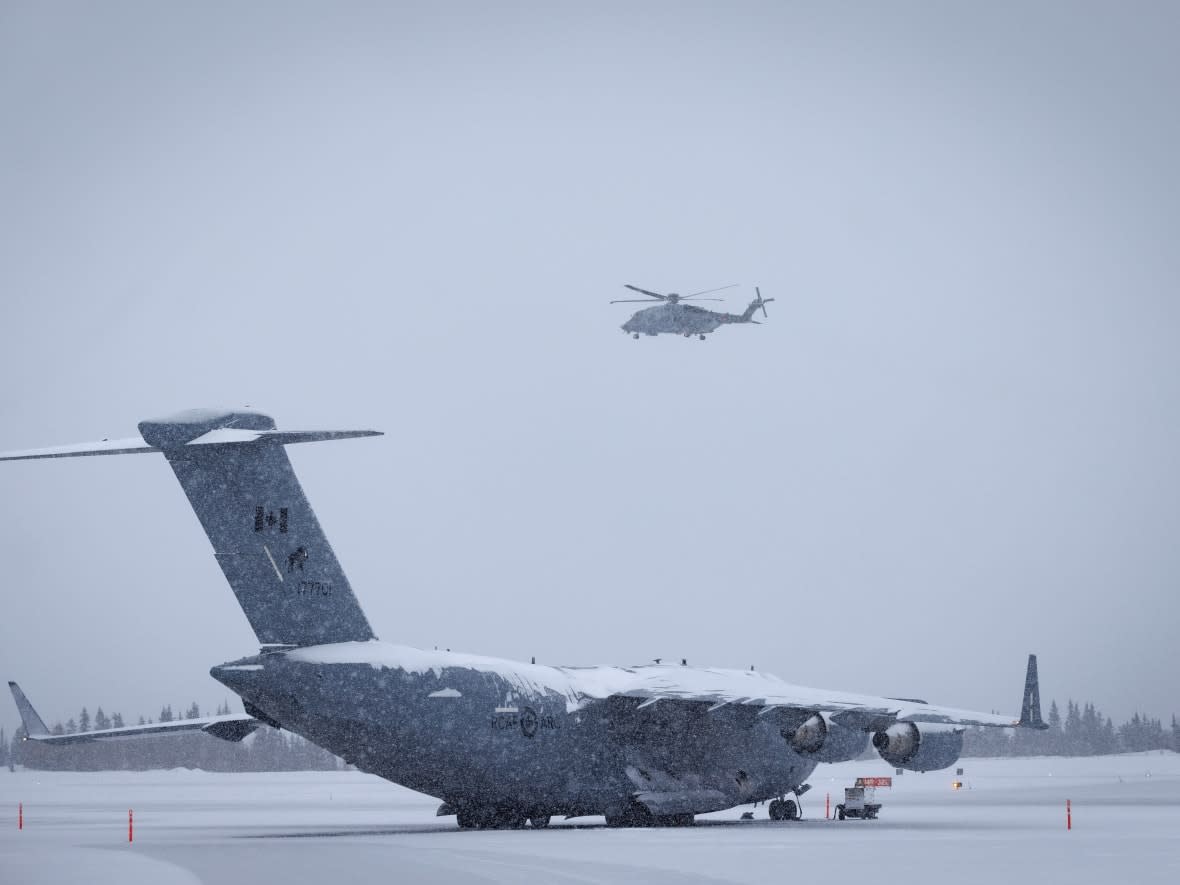A hobby club in Illinois is missing a balloon. Was it shot down over Yukon?

Last Saturday, the North American Aerospace Defence Command (NORAD) shot down an object over Yukon — one of four mysterious objects that were downed over the U.S. and Canada this month.
That same day, Feb. 11, a small hobby club — the Northern Illinois Bottlecap Balloon Brigade (NIBBB) — received its last transmission from one of its pico balloons on its seventh circumnavigation around the world. The balloon was near Hagemeister Island, off the southwest corner of Alaska.
"At that time and as we often do, we used NOAA's HYSPLIT model to predict where the balloon may go from there," the club said in a blog post on its website Friday. The prediction? That it would be floating over Yukon.
Now, NIBBB has declared the balloon "missing in action," drawing speculation it could be the same balloon the RCMP had been hunting for on the ground in Yukon with the assistance of the Canadian Armed Forces.
The RCMP announced late Friday that they are suspending search efforts, given "the snowfall that has occurred, the decreasing probability the object will be found and the current belief the object is not tied to a scenario that justifies extraordinary search efforts."
The NIBBB's statement is also raising questions whether the mysterious objects in the skies are weather balloons launched by hobbyists.
"There's talk within the amateur community that one of them that got shot down was one of these balloons," said Phil McBride, the president of Radio Amateurs of Canada.
"I can't say whether or not that's the case, but rumours abound."
NIBBB isn't pointing fingers yet.
"As has been widely reported, no part of the object shot down by the U.S. Air Force jet over Yukon territory has been recovered. Until that happens and that object is confirmed to be an identifiable pico balloon, any assertions or claims that our balloon was involved in that incident are not supported by facts," the club said in its blog post.
CBC News has reached out to NIBBB for an interview.
WATCH | Concerns over Arctic security:
Most recovery missions ended
Of the four objects shot down over North American skies in the last month, only one has been identified. China says the 60-metre balloon downed off the coast of South Carolina was for monitoring weather conditions, but Washington says it was a surveillance balloon with a massive undercarriage containing electronics.
The U.S. said Friday it had concluded recovery efforts to collect sensors and other debris from the balloon, and the last of the debris is heading to an FBI laboratory in Virginia for analysis.
On Thursday, U.S. President Joe Biden said the U.S. intelligence community was still trying to learn more about the three unidentified objects: one that was shot down over Alaska, one over Canada and a third that plunged into Lake Huron. The administration has said they were downed because they posed a threat to civil aviation.

"We don't yet know exactly what these three objects were, but nothing right now suggests they were related to the Chinese spy balloon program or they were surveillance vehicles from any other country," Biden said.
Also on Thursday, RCMP said in a release that they're suspending the search for debris in Lake Huron due to several factors, "including deteriorating weather and the low probability of recovery."
Late Friday, the U.S. military's Northern Command said it had also ended search operations on Lake Huron and in Alaska, having "discovered no debris."
A matter of 'can I do this?'
In Canada, there are a large number of people putting high-altitude balloons with radio equipment in the air, whether it's individuals, private companies, or STEM programs at schools, said McBride, of Radio Amateurs of Canada.
"Sometimes it's just a matter of 'can I do this?'" McBride said. As an example, he notes some schools will send up balloons to take photos from high altitudes.
"A big part of it is experimentation and research," he said.
He also notes ballooning is becoming more popular as the the technology becomes more accessible to the average person.
"Anyone can do it."


